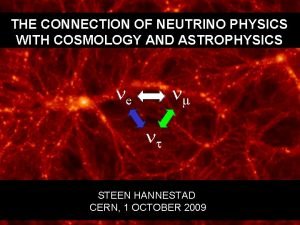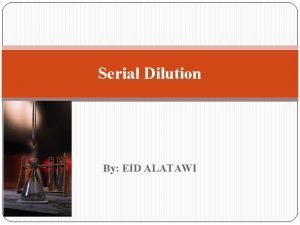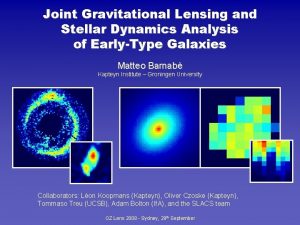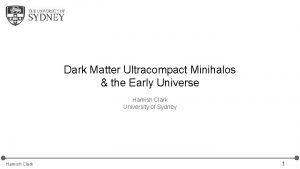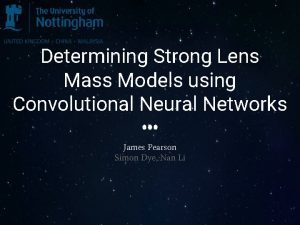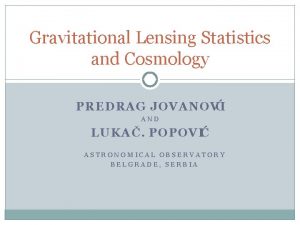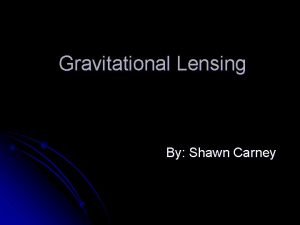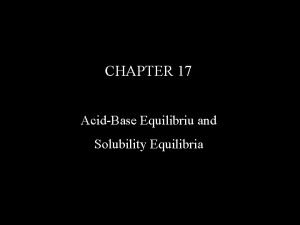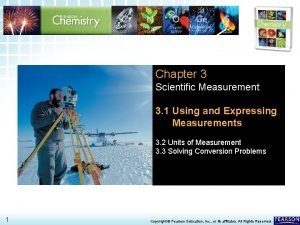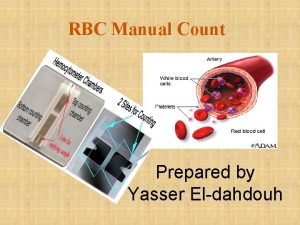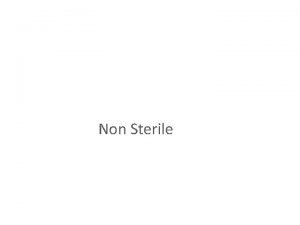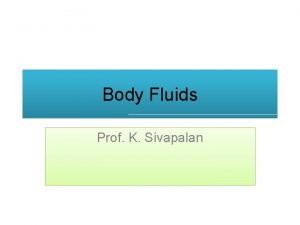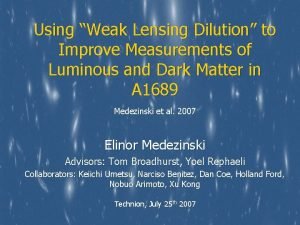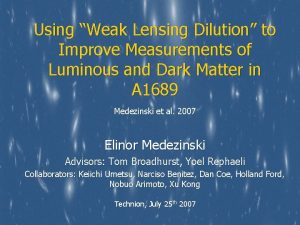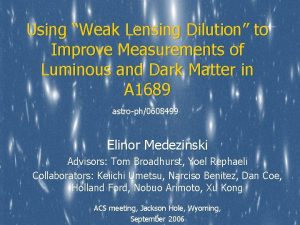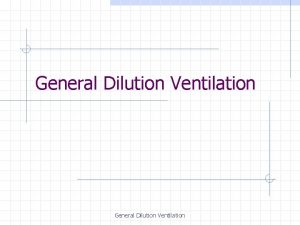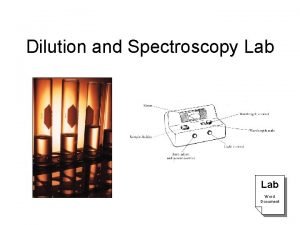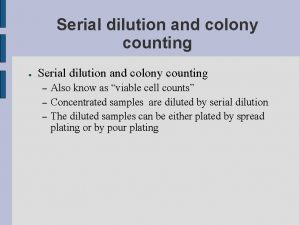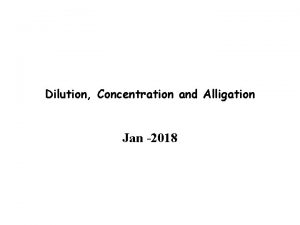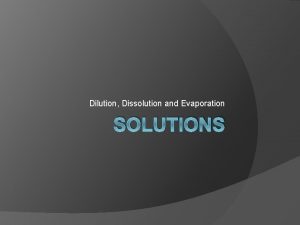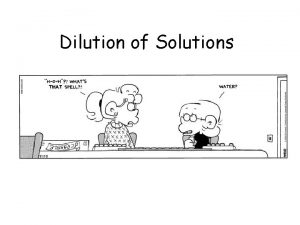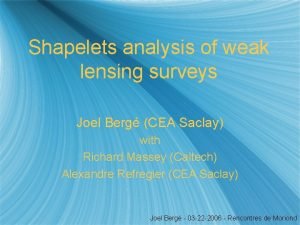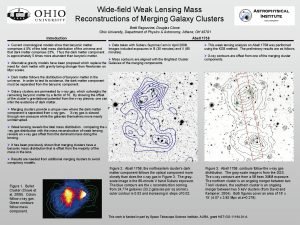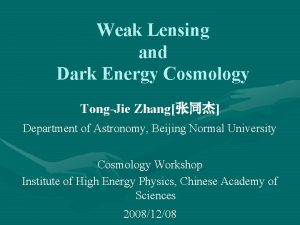Using Weak Lensing Dilution to Improve Measurements of

















- Slides: 17

Using “Weak Lensing Dilution” to Improve Measurements of Luminous and Dark Matter in A 1689 Medezinski et al. 2007 Elinor Medezinski Advisors: Tom Broadhurst, Yoel Rephaeli Collaborators: Keiichi Umetsu, Narciso Benitez, Dan Coe, Holland Ford, Nobuo Arimoto, Xu Kong Technion, July 25 th 2007

Gravitational Lensing The lens equation Image Source Lens Observer

Weak-lensing A 1689 z = 0. 183 n Subaru n Suprime. Cam 34’x 27’ Strong-lensing HST ACS 3. 3’x 3. 3’ 30’ Chandra ACIS n Arcs

Weak Lensing Shear n Tangential shear – measured relative to cluster center

Color-magnitude Red n E/SO sequence galaxies Blue Cluster sequence

Color-magnitude n n E/SO sequence galaxies Three galaxy samples n n n Red background Blue - faint background Green – cluster +background Red Blue

Setting limits n Distortion reduces closer to the cluster sequence

n Distortion of bright cluster galaxies, i<21. 5 mag – zero signal g. T=0. 0043

Weak Lensing Distortion n n Background Distortion declines gradually with radius Green – distortion diluted by unlensed cluster members The “Dilution” effect

Weak Lensing Distortion n n ACS (r<2’) +Subaru Saw-tooth pattern of strong lensing Max – tangential critical curve, ~47’’ Min – radial critical curve, ~17’’

Fraction = Cluster Membership n n Dilution to measure cluster membership Correct for red/blue relative depths

Cluster Luminosity Profile n n n Cluster luminosity – “g-weighted” flux to get cluster flux Flux Luminosity Linear fit

Mass to Light Ratio n n High M/L ~ 480 Agrees with M/L inside 2’ from Broadhurst et al. 2005 a Mass estimates from lensing M/M* n Mass profile from Broadhurst et al. 2005 a, b M*/L vs. color from Bell et al. 2003

Cluster Luminosity Function n Flat, no upturn

Distortion profile fits n n NFW profile Best fit: High concentration

Summary n n n Have determined light profile, color profile and radial luminosity functions of A 1689 reliably, with no need to resolve the cluster sequence based on color. Constructed flat luminosity function, with no need for far-field counts for background subtraction Deduced high NFW concentration Future work: n n n Obtain photo-z’s using more colors for consistency checks. Extend to other clusters (CL 0024, A 370, A 1703…) using existing Subaru and ACS data. Constrain mass distribution by combining X-ray data and SZ effect.

Next Cluster – A 1703
 Weak lensing
Weak lensing Serial vs parallel dilution
Serial vs parallel dilution What is a 1:2 dilution
What is a 1:2 dilution Lensing
Lensing Lensing
Lensing Gravitational lensing
Gravitational lensing Einstein cross
Einstein cross Einstein cross
Einstein cross Half equivalence point
Half equivalence point Weak acid and weak base reaction
Weak acid and weak base reaction Strong acid examples
Strong acid examples Using and expressing measurements
Using and expressing measurements Using and expressing measurements
Using and expressing measurements Dilution factor of wbc pipette
Dilution factor of wbc pipette Geometric dilution method
Geometric dilution method Define extemporaneous compounding
Define extemporaneous compounding Indicator dilution principle
Indicator dilution principle La table de mac grady
La table de mac grady
